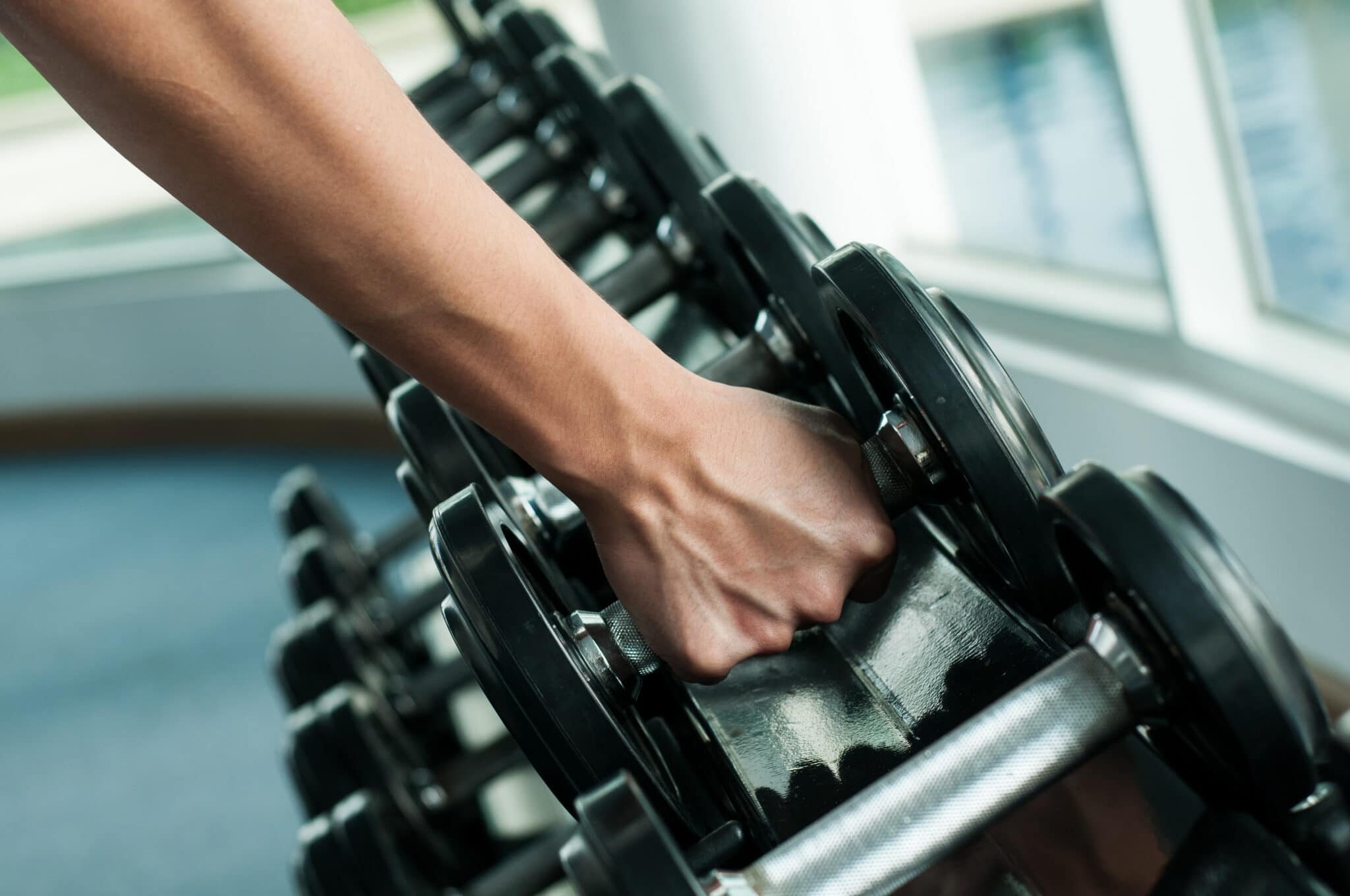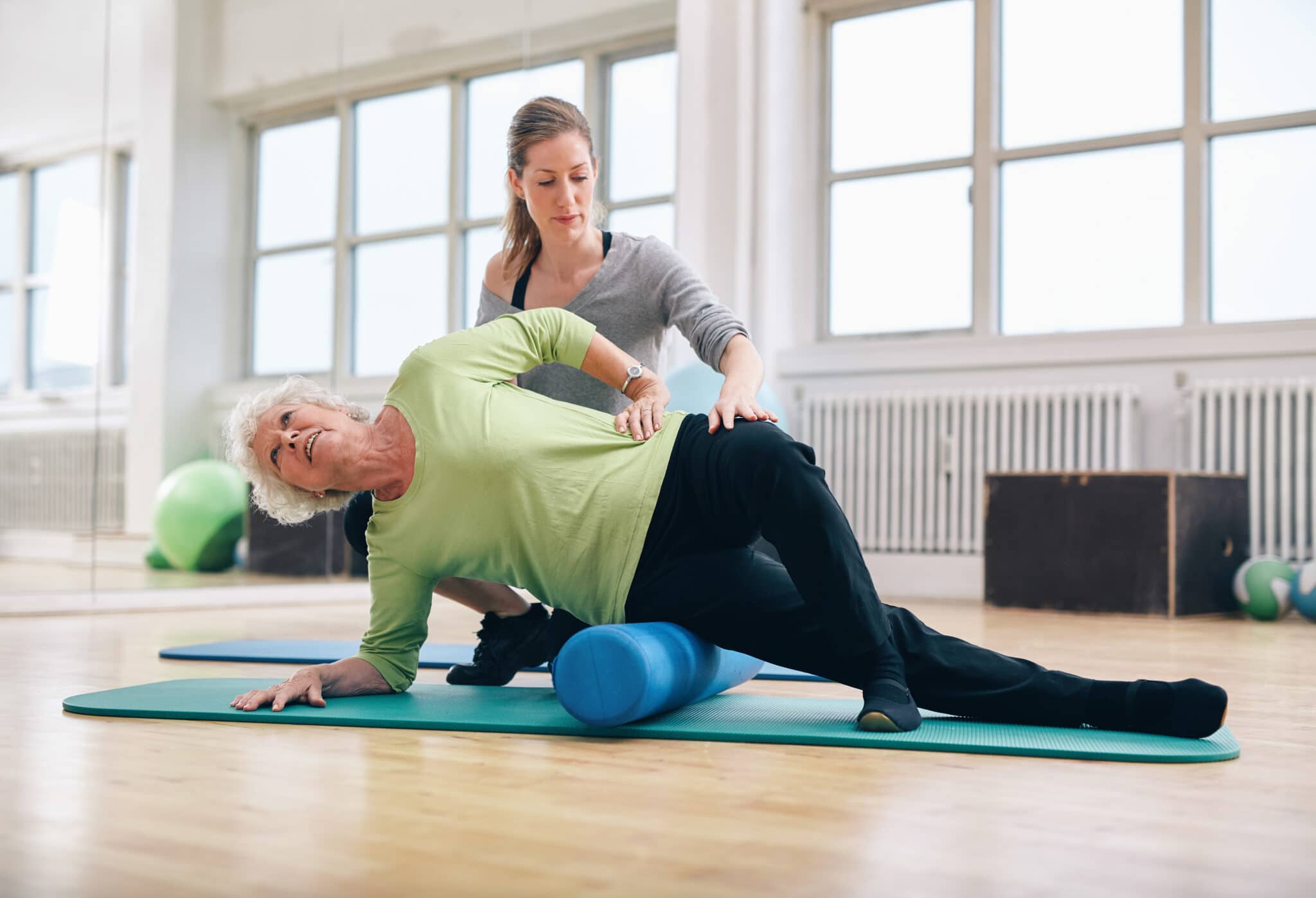There’s a difference between aging and getting old, and that distinction stems from prioritizing movement. As we get older, regular exercise becomes increasingly important. It’s what our bodies need to prevent diseases and reap the benefits of a life of hard work.
Strength training for women over 60, in particular, is vital as they are entering the golden years. Here’s what you need to know about building muscle and starting a strength training regimen for women 60 and over.
Quick Navigation
Can a Woman Build Muscle After 60?
Why Strength Training is Important for Older Adults
Counteract a Slowing Metabolism
Strength Training Programs to Follow Over the Age of 60
Resistance Bands and Cable Machines
Factors to Consider When Looking to Build Muscle Later in Life
Can a Woman Build Muscle After 60?
There’s a misconception that women can’t build muscle after a certain age. This myth stems from the very real issue of sarcopenia, or the age-related loss of skeletal muscle mass. While sarcopenia is a fact of life, it’s not a life sentence. You can offset age-related muscle mass loss through strength training.
In fact, you can gain more muscle mass than you had in your younger years.
While it won’t be an easy task, the right combination of strength training and holistic health can help you build muscle at any age.
Read Also: Intermittent Fasting for women over 50 – Is it right for you?
Why Strength Training is Important for Older Adults
Maintain Bone Density
While there are plenty of reasons for older adults to get moving, one of the most compelling reasons for starting resistance training is bone density.
Women, in particular, are susceptible to bone loss after thirty. At this stage, bone demineralization outpaces bone formation, which can lead to osteoporosis. Osteoporosis is responsible for over 8.9 million fractures annually, with one in three women worldwide experiencing osteoporotic fractures.
Read Also: 10 Resistance Band Exercises For Seniors To Build Strength and Prevent Future Falls
Strength training exposes your bones to a mechanical load, which can help maintain or even increase bone mass and density— and the heavier the weight, the better.

Counteract a Slowing Metabolism
Another essential factor supporting strength training for women over 60 is counteracting a slowing metabolism. Many women default to restrictive dieting in an attempt to curb age-related weight gain. The problem with this approach is that much of the weight loss they experience is attributed to muscle loss rather than body fat.
Weight training can help build muscle, which requires more energy to maintain than body fat. In other words, when at rest, someone with more muscle burns more calories than someone with more body fat.
By adding resistance training to your workout routine, you can mitigate a slowing metabolism.
Read Also: How Women Can Build Muscle After 40
Increased Balance
Maintaining proper balance is an especially integral consideration for women over 60. Many factors contribute to decreased balance with age. One of these factors is muscle loss and joint instability. Physical activity plays a valuable role in keeping those muscles and joints operational.
Weight lifting can also help improve coordination and spatial awareness. While strength training can’t make up for problems with depth perception and imbalances caused by hearing loss, it can improve reaction time and help prevent a debilitating fall.
Read Also: Benefits of Calisthenics – 8 Reasons To Do Bodyweight Workouts
Cognitive Function
Finally, lifting weights can help older adults maintain their cognitive function. Initial studies have shown that strength training and resistance exercises trigger extensive functional brain changes in the frontal lobe. Based on the results, researchers believe that resistance training can counteract age-related cognitive decline and boost memory.
In summary, strength training for women over 60 can help them become strong in body and strong in mind.
Strength Training Programs to Follow Over the Age of 60
While building muscle after age 60 isn’t impossible, there are a few complexities to keep in mind. The primary area of focus when getting started should be focusing on form and working within body limitations. This approach will help prevent injuries and create functional progression to get the most out of each workout.
Fitness Assessment
Women who want to strength train after 60 should work with an experienced personal trainer to develop an exercise program that suits their health needs. Older adults have a variety of health conditions that could impact their abilities, from heart disease and high blood pressure to poor eyesight.
During a fitness assessment, a personal trainer will go over your limitations and work through exercises that highlight any potential weaknesses in balance and mobility. Work with a personal trainer who specializes in older populations and active aging for this crucial step.
Bodyweight Workouts
Once a functional assessment has been conducted, the foray into resistance training is bodyweight exercises. Bodyweight exercises help you build muscle strength while working on form and getting your body used to regular physical activity.
Related Read: Calisthenics For Women – Workouts, Routines, and More

Don’t let the lack of weights fool you— bodyweight exercises can be challenging when done in a sequential exercise routine. Keep in mind that learning to squat with the proper form now is an integral part of preventing injury when squatting with weights later on.
Read Also: Calisthenics vs. Weights – The Guide to Both Training Strategies
Resistance Bands and Cable Machines
Progressive overload is the key to taking your strength exercise training to the next level. Adding weight is what loads your muscles and bones, improving strength over time.
Resistance bands are an effective training tool that creates tension and resistance throughout the movement without adding weights. Working with a resistance band is affordable and accessible, making them ideal for resistance training on the go.
Read Also: Best Resistance Bands to Purchase, and Workouts with them
There are benefits to using a cable machine over a dumbbell for women who are starting with resistance exercise. Cable machines offer stability throughout the movement, which encourages proper form. While working with a dumbbell is fine for those who don’t have access to cable machines, starting with lower weights and working on functional movement is essential.
Related Read: The Seated Cable Row – Why It Needs To Be In Your Workout Routine
Increasing Intensity
Once the foundation is built, it’s time to gradually increase the intensity. This can be accomplished by increasing the weights or the reps being completed in each movement. You may decide to try interval training with light aerobic exercise between strength exercise sets. Depending on your interests and comfort level, you can also start to incorporate more complex movements and training styles, like power training or Olympic weightlifting.
Being over 60 doesn’t mean having to lift light and take it easy. There are benefits to pushing oneself and trying new things. You should feel tired after a training session. It should be an uncomfortable experience. However, it’s up to you (and your trainer) to learn the difference between pushing yourself and harming yourself.
Read Also: The 5 Best BCAAs For Women To Unleash Their Inner Badass
Factors to Consider When Looking to Build Muscle Later in Life
Building muscle is about more than what you do in the gym. Here are some of the other factors that will impact your results.
Balance
While strength training can help maintain and improve your balance as you age, your balance may negatively impact your exercise routine. Be mindful of your balance issues and scale your routine accordingly to prevent injury. While doing a unilateral exercise with a dumbbell may be manageable, it’s not worth the risk of falling if balance is a concern.
Physical Limitations
You may have some physical limitations that prevent you from targeting specific muscle groups or completing specific exercises, even with modifications.
For example, many women over 60 have problems with overhead exercises during upper body workouts. Know your limits and focus on getting good at what you can do. Consider working with a physiotherapist to help you reach any injury-related goals.

Mobility and Flexibility
Mobility and flexibility become both more challenging and more important as we age. Dedicate time to warming up and cooling down, as well as active rest days focused on mobility-centric exercises between strength training sessions.
Read Also: Post Workout Tips, Supplements, And Necessary Products for Women
Nutrition
Nutrition plays a vital role in building muscle. Focus on getting plenty of high-quality lean protein to promote muscle growth and repair. Eating a diverse diet with plenty of fruit and vegetables can keep your body functioning at an optimal level to promote recovery and wellness, as well as providing carbohydrates for energy.
Related Read: 20 Post Workout Meals For Muscle Gain
Rest and Recovery
The downside of aging is that it can take longer for your body to recover between workouts. You can improve the quality of your recovery by scheduling active rest days into your exercise routine and using those days to go for a walk or focus on mobility.
Read Also: Top 6 Best Self Myofascial Release Tools
Getting enough sleep is vital for strength training recovery, as well. Create an effective sleep environment that allows you to get the recommended eight hours. Changes in sleep patterns aren’t uncommon for women in their sixties. Find a routine that works for you and seek medical advice as needed.
Conclusion
It’s never too late to start weight training. With the right program and a holistic approach to health, women over 60 can build muscle mass and enjoy the golden years to the fullest.

